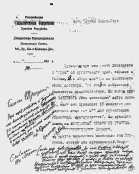
 Food shipments to Russia
Food shipments to Russia
After the Bolshevik Revolution of 1917, the ensuing Civil War produced acute food shortages in southwestern Russia. Wartime devastation was compounded by two successive seasons of drought, and by 1920 it was clear that a full-scale famine was under way in the Volga River Valley, Crimea, Ukraine, and Armenia. Conditions were so desperate that in early 1920 the Soviet government sent out a worldwide appeal for food aid to avert the starvation of millions of people.
Several volunteer groups in the United States and Europe had by then organized relief programs, but it became clear that help was needed on a larger scale because an estimated 10 to 20 million lives were at stake. Although it had not officially recognized the Soviet regime, the United States government was pressed from many sides to intervene, and in August 1920 an informal agreement was negotiated to begin a famine relief program. In 1921 President Warren Harding appointed Herbert Hoover, then secretary of commerce, to organize the relief effort.
Congress authorized $20 million, and Hoover proceeded to organize the American Relief Administration (ARA) to do the job. Under Hoover's terms, the ARA was to be a completely American-run relief program for the transport, storage, and delivery of relief supplies (mainly food and seed grain) to those in the famine region. After Soviet officials agreed, hundreds of American volunteers were dispatched to oversee the program. The ARA gradually earned the trust of the local Communist authorities and was given a virtually free hand to distribute thousands of tons of grain, as well as clothing and medical supplies. This remarkable humanitarian effort was credited with saving many millions of lives.
ARA aid continued into 1923, by which time local farms were again producing and the famine's grip was broken. Hoover and his ARA were later honored by the Soviet government for the care and generosity that the United States had shown in this desperate crisis.

Early Cooperation: Economic Cooperation
During the 1920s and early 1930s, tensions between the Soviet Union and the West eased somewhat, particularly in the area of economic cooperation. Following their consolidation of political power, the Bolsheviks faced the same economic challenge as had the government ministers of the tsarist regime: how to efficiently organize the vast natural and human resources of the Soviet Union. The economic situation was made even more difficult by the immense social and economic dislocation caused by World War I, the revolutions of 1917, and the Civil War of 1918-21.
As factories stood idle and famine raged in the countryside, Vladimir Lenin instituted the New Economic Policy (NEP) in 1921 to infuse energy and direction into the fledgling Communist- controlled economy. NEP retreated from Communist orthodoxy and opened up the Soviet monolith economically.
For a variety of reasons -- compassion for the sufferings of the Soviet peoples, sympathy for the great "socialist experiment," but primarily for the pursuit of profit -- Western businessmen and diplomats began opening contacts with the Soviet Union. Among these persons were Averell Harriman, Armand Hammer, and Henry Ford, who sold tractors to the Soviet Union. Such endeavors facilitated commercial ties between the Soviet Union and the United States, establishing the basis for further cooperation, dialogue, and diplomatic relations between the two countries. This era of cooperation was never solidly established, however, and it diminished as Joseph Stalin attempted to eradicate vestiges of capitalism and to make the Soviet Union economically self-sufficient.

Please follow the guided tour or have a look at one of these showcases:
When you have seen them all, walk down the stairs, back to the entrance hall.